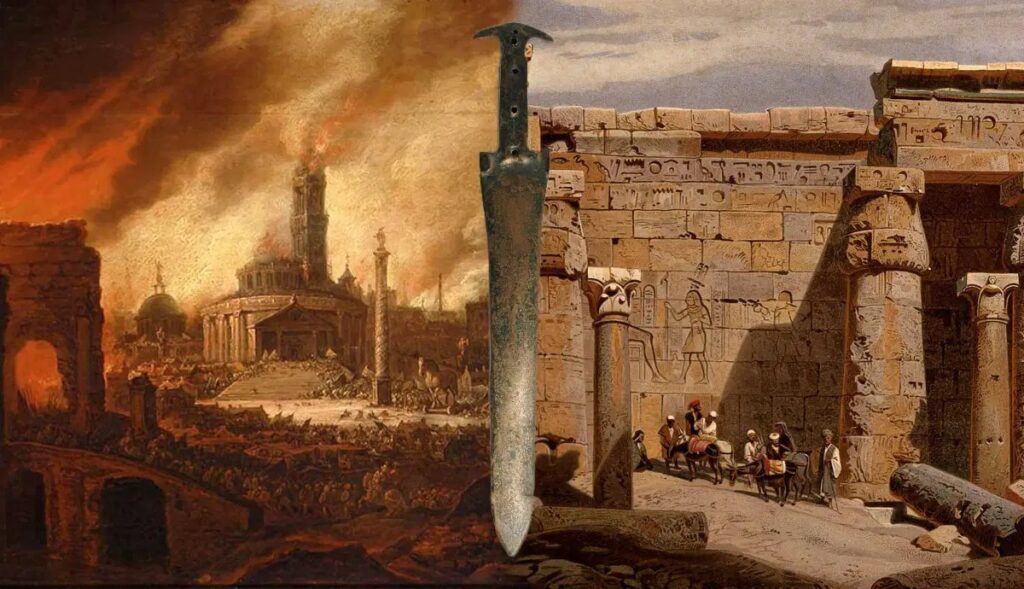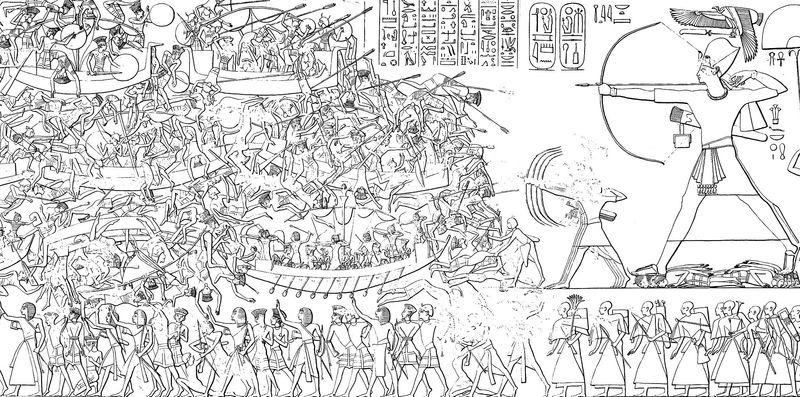
Just over 3,200 years ago, the zenith of human civilization seemed within grasp. Flourishing in the Eastern Mediterranean, North Africa, and the Near East, complex societies interwove through diplomacy and trade, marking an era of unprecedented growth. Yet, as quickly as these civilizations peaked, they spiraled into decline during the mysterious Late Bronze Age collapse, leading historians and archaeologists on a quest to decipher this sudden downturn.
The Empires of the Bronze Age: A Brief Overview
During the Bronze Age, starting around 3300 BCE, technological advancements saw the rise of bronze tools and weaponry, fostering urbanization and societal complexities. Empires such as the Middle Assyrian Empire, the New Kingdom of Egypt, the Hittite Empire in Anatolia, and the Mycenaeans thrived, setting the stage for an interconnected world. However, around 1177 BCE, these civilizations encountered a catastrophic series of events that led to widespread ruin.

Investigating the Causes of Collapse
Eric Cline, an American archaeologist, pinpoints 1177 BCE as the critical year when the dominoes began to fall. His analysis suggests a combination of internal strife, wars, and external invasions contributed to the collapse. The enigmatic ‘Sea Peoples,’ often blamed for the destruction, remain a contentious topic among scholars. Their identity and exact impact on these societies continue to spark debate, with some suggesting their involvement in the abandonment of cities across the region.

Environmental Catastrophe and Social Unrest
Another compelling theory revolves around environmental disaster. A 2013 study examining pollen grains in ancient lake sediments suggests significant climate changes led to droughts, food shortages, and subsequent famines during this period. This ecological shift likely fueled mass migrations and social turmoil, weakening the once-thriving civilizations and leaving them susceptible to invasions, possibly by the Sea Peoples.

The Consequence of Political Systems
The intricate political structures of these societies, while initially beneficial, may have also played a role in their downfall. The centralized, complex systems could have fostered inequality and exploitation, sowing seeds of discontent and instability within the empires.

A Perfect Storm of Calamities
Cline’s theory of a ‘perfect storm’ involving multiple factors — climatic shifts, economic difficulties, societal unrest, and possibly pandemics — underscores the complexity of the Bronze Age collapse. It is a stark reminder that no civilization, no matter its might or advancement, is impervious to decline.
Lessons from History
The fall of the Bronze Age civilizations offers a humbling lesson in the fragility of human societies. It serves as a poignant reminder that factors like climate change, internal conflict, and technological shifts can dramatically alter the course of history.

Leave a Reply